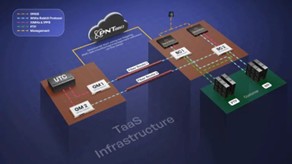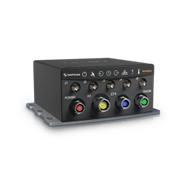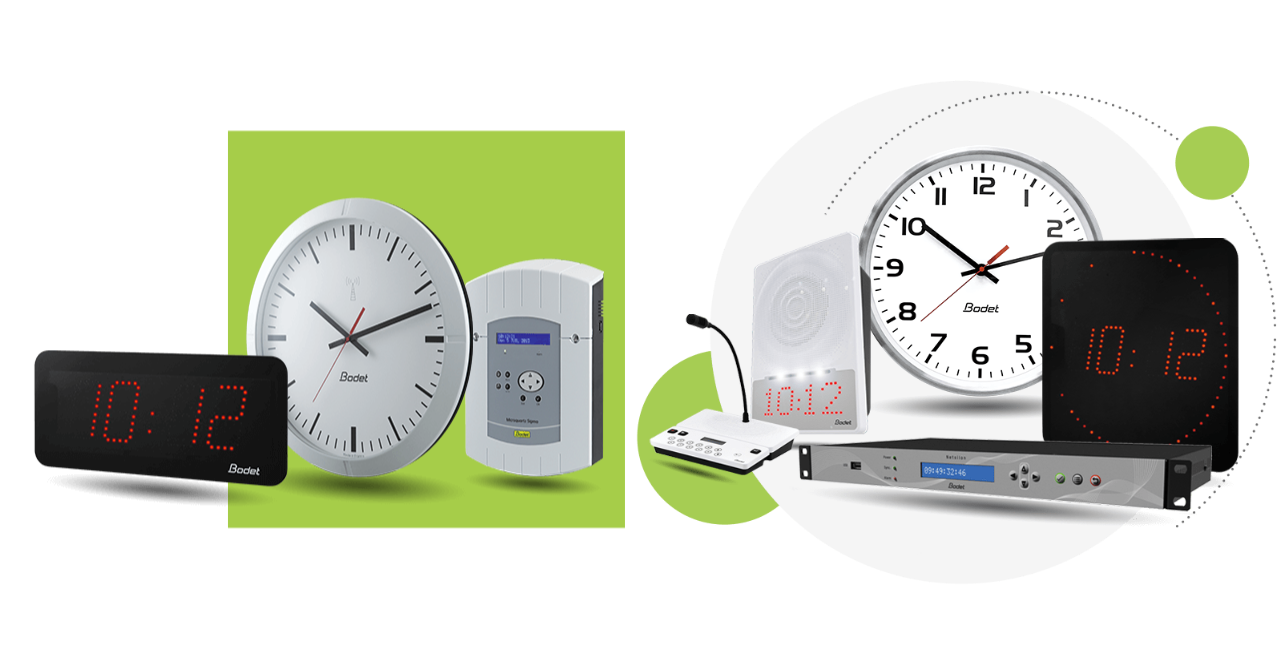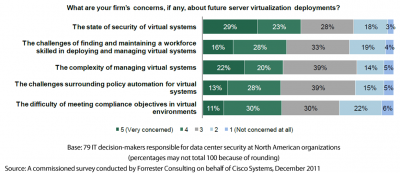As PNT technology continues to evolve, Safran remains at the forefront of innovation, delivering advanced solutions designed to meet the growing demands of modern defense, aerospace, and critical infrastructure sectors. Throughout 2025, Safran has introduced several new and updated products that build on its reputation for precision, reliability, and performance. From enhanced navigation systems to cutting-edge anti-jamming technology, these latest offerings reflect Safran’s commitment to pushing boundaries and ensuring dependable operation in even the most challenging environments.
TimeLynx

With its latest offering, TimeLynx™, Safran is redefining how precision timing is delivered. Instead of requiring customers to build, operate, and maintain complex timing infrastructure, TimeLynx™ provides timing directly as a fully managed service.
Key Capabilities
Fully managed service: Safran handles the entire system, from the GNSS receiver and antenna to boundary clocks, grandmasters, and delivery to your rack. You simply connect and start receiving precise timing.
Ultra-high accuracy: TimeLynx™ guarantees accuracy within 100 nanoseconds to UTC when using the White Rabbit protocol and up to 250 nanoseconds when using PTP.
Resilient and traceable: Time is traceable to national metrology institutes (NMIs), and the service is designed to withstand GNSS or GPS jamming and spoofing through built-in fallback mechanisms.
Flexible operational model: By offering timing as a service (TaaS) rather than requiring a large capital investment in infrastructure, TimeLynx™ supports modern operational expense models and enables faster deployment and scalability.
Industries such as finance, telecommunications, data centers, broadcasting, and energy require precise, reliable timing but face challenges like GNSS vulnerabilities, traceability demands, and high costs of in-house systems. TimeLynx™ delivers ultra-precise, resilient time directly to infrastructure, providing a plug-and-play solution that ensures every nanosecond counts and downtime is minimized.
MIRA

Safran’s new MIRA miniature rubidium atomic clock sets a new benchmark for precision timing technology. Designed to deliver atomic-level stability in an ultra-compact and energy-efficient form, MIRA provides accurate, reliable timing for mission-critical systems that must perform flawlessly, even when satellite signals are disrupted or unavailable.
Key Capabilities
MIRA represents the second generation of Safran’s miniature rubidium clocks, built on more than 30 years of expertise and a proven track record of over 40,000 units sold worldwide. Its design brings together exceptional performance, durability, and efficiency in a remarkably small package.
Ultra-compact and energy efficient: Just 40 cc and 16 mm high, MIRA fits tight spaces and uses only 0.5 W in standard mode and 1.5 W in high-performance mode.
Exceptional holdover performance: Maintains timing within 500 nanoseconds over 24 hours without GNSS correction.
Rugged and reliable: Operates from –40 °C to +80 °C, withstands 50 g shock and 7.7 gRMS vibration, and stays atomic-locked in high-altitude or mobile conditions.
Flexible integration: Standard interfaces and configurable modes allow easy integration into legacy or modern systems across multiple platforms.
As industries increasingly rely on accurate, traceable, and resilient timing, MIRA provides a stable, satellite-independent source that operates even in GNSS-denied environments. Its compact, low-power design suits telecommunications, radar, satellite communications, counter-UAV, and portable systems. Combining rubidium technology with flexible integration, MIRA ensures synchronization, stability, and confidence where every nanosecond counts.
Updated VersaSync

Safran has released an upgraded VersaSync, a rugged GNSS master clock and network time server designed for demanding mission environments. The new VersaSync offers enhanced frequency stability under extreme conditions, improved holdover performance when GNSS signals are lost, and greater resilience against power disruptions. Its compact, rugged design ensures reliable operation across airborne, ground, and maritime applications.
New Features
Higher stability: Improved frequency performance under extreme temperature, shock, and vibration.
Stronger resilience: Better resistance to power-supply transients for uninterrupted operation.
Longer holdover: Enhanced accuracy during extended GNSS outages.
Protected timing: Maintains robust anti-jamming and anti-spoofing safeguards.
Seamless upgrades: Keeps full form-fit compatibility with previous models.
Flexible outputs: Preserves configurable time and frequency outputs for diverse mission needs.
Widely used across defense and security applications, including ISR aircraft, naval systems, and tactical vehicles, VersaSync provides precise and dependable timing when it matters most. It delivers consistent performance even in the most challenging environments, ensuring mission-critical operations remain accurate and reliable under extreme conditions
BlackNaute

Safran Electronics & Defense introduces BlackNaute, a next‑generation resilient PNT (Position, Navigation & Timing) system built to operate even when GNSS signals are jammed, spoofed, or denied. Combining their patented HRG Dual Core inertial‑navigation technology, a multi‑mode GNSS receiver, and a built‑in atomic clock, BlackNaute ensures continuous, precise navigation and timing — even in contested or electronic warfare environments. The system is modular, rugged, and optimized for military aircraft, helicopters, UAVs and other tactical platforms.
Key Capabilities
Resilient navigation: Maintains positioning even in GNSS‑denied conditions (jamming, spoofing, meaconing).
High inertial accuracy: Inertial drift < 0.4 nautical miles/hour. Ideal for high‑speed maneuvering or GNSS outages.
Built-in atomic clock: Provides precise, stable timing critical for secure communications and synchronized operations.
EW‑resilient algorithms: Advanced anti‑jamming and anti‑spoofing protections, proven across thousands of operational use‑cases.
Compact & rugged design: Low SWaP (Size, Weight, Power), MIL‑STD certified — suitable for aircraft, helicopters, UAVs and other defense platforms.
BlackNaute represents a major step forward for defense navigation. Instead of relying solely on vulnerable satellite-based signals, it combines inertial, GNSS, and atomic-clock technologies to deliver assured PNT under the harshest conditions. For military platforms operating in contested environments where GNSS cannot be trusted, BlackNaute provides a reliable, self-contained solution that ensures mission continuity.
If any of these products interest you, contact our sales team today for a quote

























